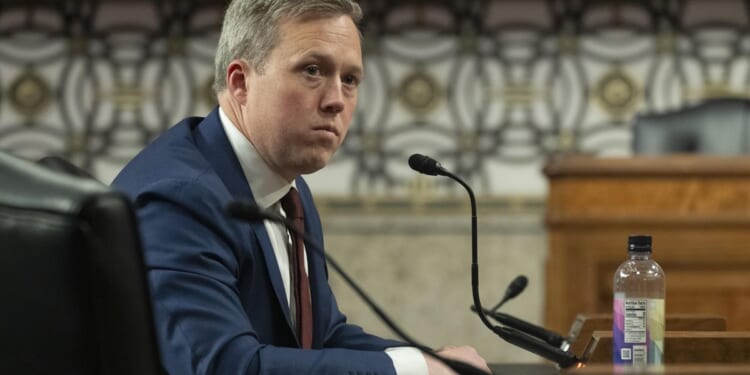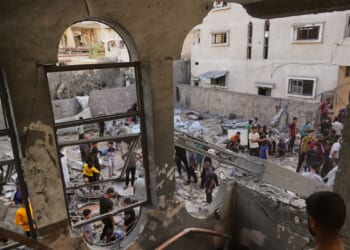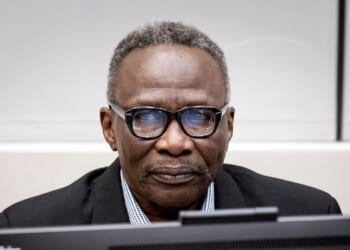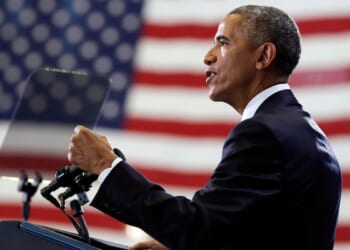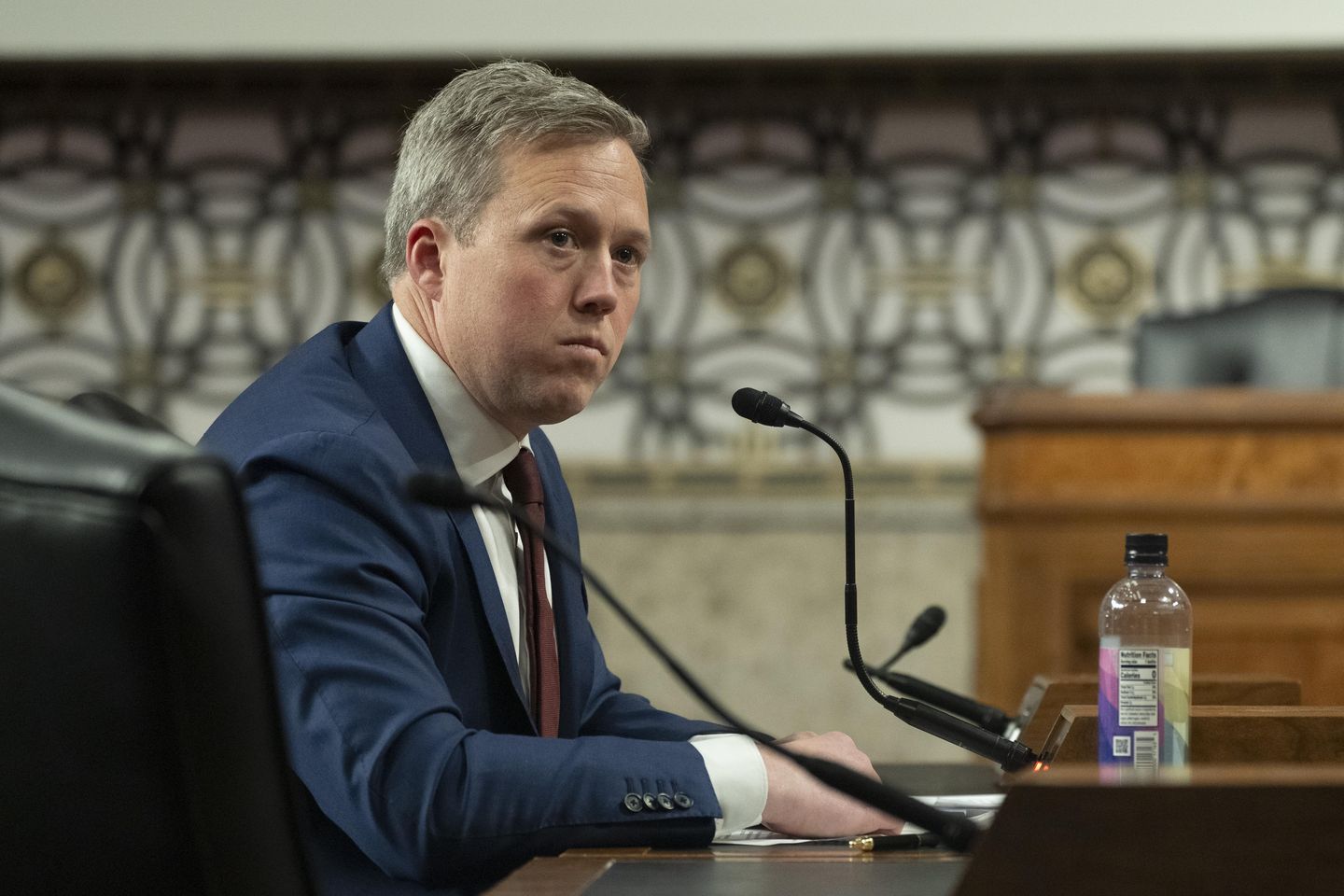
The Army is developing next-generation mobile nuclear reactors under a new program announced Tuesday, promising to have “at least one” working reactor by summer 2026 as part of a push to ensure reliable power generation at military installations and for forward-deployed troops.
Army Secretary Daniel P. Driscoll and Secretary of Energy Chris Wright announced the new initiative, known as the Janus Program, at the Association of the United States Army convention in downtown Washington. Officials said the development and production of next-generation mobile nuclear reactors — some small enough to fit on the backs of trucks — will help advance America’s nuclear industry. That industry, they said, has seen a great deal of innovation in recent years but has been “smothered” by the continued fear of nuclear energy.
Officials said energy resilience is a central goal.
“Janus is the god of the Roman god of transitions,” Dr. Jeff Waksman, a deputy assistant secretary of the Army, said during a panel discussion at the AUSA conference. “This is about the transition from prototypes to fully commercial nuclear power to provide energy resilience for our soldiers.”
During that panel discussion, Mr. Wright highlighted the long history of collaboration between the military and the Energy Department, dating back to World War II and the Manhattan Project.
“The military and the Department of Energy [have] been linked since we started,” Mr. Wright said.
Many of the technologies on display at AUSA will drastically increase the demands for power supply in the field, making the prospect of mobile reactor units an extremely valuable one for the Army.
“What we, the Army, are trying to do is be a convener and a host for American entrepreneurship and American industry,” Mr. Driscoll said, adding that the Janus Program is the next step in that philosophy.
The Army’s Janus Program aligns with a broader push by the Trump administration to accelerate the production of new reactors and to use nuclear power more broadly across the nation, and to do so quickly. Mr. Wright said that he expects to see movement on the program and an actual reactor “before July 4 of next year.”
In May, President Trump announced plans for a “nuclear renaissance” that called for quadrupling the nation’s power output by 2050, including 300 gigawatts of net new capacity. One gigawatt of power can provide electricity to about 750,000 homes. The president’s executive called for the operation of an Army-regulated nuclear reactor at a domestic military installation no later than September 2028.
For the military, reliance on diesel generators when deployed and local electric grids here at home — the same grids that serve the general public — is widely viewed as a significant national security threat. Fueling logistics limit the operations of U.S. forces abroad and domestically, if those grids are compromised, either by a natural disaster, kinetic enemy attack or cyber operation, military installations could be without power.
“The military installations themselves are currently positioning physical and cyber security measures, but illicit actors do not need to penetrate the bases,” reads a 2021 article in the National Defense University Press, examining the value of “energy independence” on military bases. “Targeting the external power distribution system that provides a base its electricity is just as damaging as targeting the base itself.”
Mr. Driscoll sees the program as a critical step in enabling the force to project power around the world. The increased demand for dispersed technology and power in the Indo-Pacific region is just one example.
“It is not going to be like a war we have had in the last 40 or 50 years,” Mr. Driscoll said. “We are going to need energy on the actual objective. We’re going to need to be able to access power like we have never needed it before.”
That olive branch from the Army to newcomers and entrants to the field makes the program appealing to an entirely new category of micro reactor companies.
Isaiah Taylor, the founder and CEO of the California-based company Valar Atomics, said that his firm is “factorizing” the production of small reactors. His company, Mr. Taylor said, will manufacture in its factories the kinds of reactors that could be used at Army installations, rather than the traditional, decades-old approach of constructing large nuclear reactors on site.
In an exclusive interview Tuesday after the announcement by Mr. Driscoll, Mr. Taylor said the Janus Program is a key step forward for the military and is a recognition that reliance on outside power sources represents a liability for America’s armed forces.
“To be dependent on everybody else’s energy supply is very vulnerable … It’s a dependency you don’t want to have,” he said.
While the Navy has long used nuclear energy to power its submarines, insiders say it’s taken years for private industry and other arms of the military to align on the broader goal of mobile ground platforms for nuclear energy.
“That’s really one of the reasons I started Valar Atomics. I realized there was a short window of time we have to get this right,” Mr. Taylor said. “We need to have reactors on bases by 2028 and that requires a completely different pace of building than we’ve seen in the nuclear industry.”
The company’s reactor is small enough to fit on trucks or ships, he said. Eventually, he expects the company to be able to construct reactors in as little as two months in its factory.
The development of these reactors is on the bleeding edge of both reactor technology and regulations regarding their use and safety. Mr. Wright and Mr. Driscoll said the bureaucracy and lack of action by the government was hampering development, but both wanted to see that change.
“There are so many things we as a nation have lost the ability to do because we’ve stopped ourselves from doing it,” Mr. Driscoll said. “Whatever it is that we need as a nation, we can do it. We have amazing innovators, and we are getting in our own way.”
“This isn’t five years away or 10 years away, next year,” Wright said.”Ultimately, we will have 10 or 12 of these reactors running in the next, say, couple years out in Idaho and in some other Western locations.”

